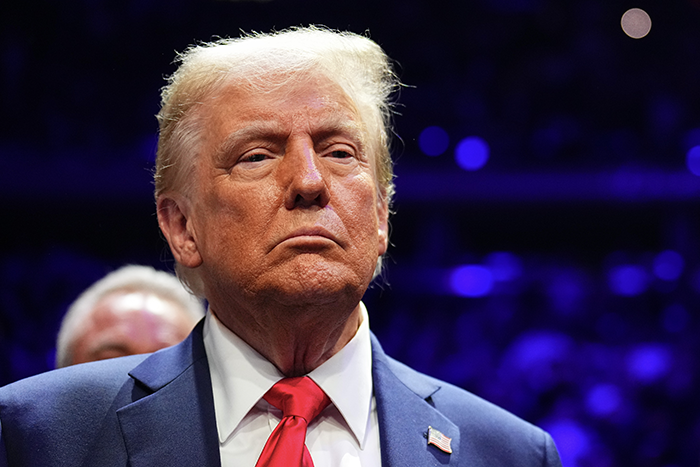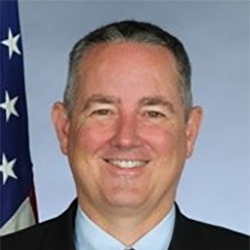Analyses / Political and Geostrategic Observatory of the United States
19 November 2024
Trump May Have Learned Something.

It has been less than two weeks since Donald Trump was elected president. His transition team has begun its work at lightning speed. Just a few days after the campaign ended, Trump had already announced many of his key cabinet appointments, and even some appointments to important but secondary positions. The contrast between this transition and the one after the 2016 elections could not be more pronounced.
The first months of a presidential term are often the most productive, especially if the president’s party controls Congress. There may be a honeymoon period for new leaders, and effective leaders know they need to take advantage of it. Later in the term, crises occur, opposition forms, and the president almost invariably faces a beating in the midterm elections, potentially losing his majority in one or both chambers. The time to act is the first day.
That is why the transition, the twilight period between the early November elections and the inauguration of the new president on January 20, is crucial. It is the time for an elected president to focus on building a coherent and ideologically unified team, developing concrete options designed to implement his campaign promises, and strengthening support for his candidates and policy proposals in Congress. An elected president who effectively manages the transition has a huge head start the day he arrives in the Oval Office. Given the importance of this handover, U.S. law provides government funding and offices for transition teams.
Trump’s first transition at the end of 2016 was disastrous, and the effects of that poorly prepared transition echoed throughout his presidency. Trump initially appointed former New Jersey Governor Chris Christie to lead his transition team. Christie had a slow start and faced some political difficulties, and Trump fired him just days after the transition began. Christie later described the new team as literally throwing away the months of work he and his colleagues had prepared. After Christie was replaced by the elected vice president, Pence, three of Trump’s children, none of whom had any government experience, took on key roles in vetting candidates for the new administration. Trump himself seemed little interested in the nuts and bolts of transition planning. Often, he did not know the people he had appointed well and had little understanding of their political positions. As a result of this chaotic process, Trump found himself, unsurprisingly, with a series of cabinet and White House choices that consistently disappointed him. Whether it was an Attorney General who refused to shut down investigations into Russian interference in his election or Secretaries of State and Defense who advocated policies Trump opposed, such as the Iran nuclear deal, Trump often found himself blocked or opposed in the early years of his presidency by his own appointees. And he discovered that even a Republican-controlled Congress could display surprisingly independence.
If the past two weeks are anything to go by, Trump has learned valuable lessons from this experience. Among them:
Act quickly.
Surprisingly early in the transition, Trump has already appointed candidates for key cabinet positions: Secretary of State, Defense, Homeland Security, Interior, Health and Human Services, Justice, Director of National Intelligence, CIA Director, U.S. Ambassador to the UN. He has also appointed key staff members for the White House. He has even made decisions on secondary but influential appointments that will impact his agenda, such as the Ambassador to Israel or the Environmental Protection Agency. The fact that these administration leaders are already identified gives them two months to familiarize themselves with their agencies, develop policy proposals with the Trump team, and lobby Congress. Unlike last time, these individuals will be prepared and aligned with Trump on inauguration day.
Name people you know with unwavering loyalty.
In 2016, Trump sometimes made his choices with little information or based on suggestions from others. Trump liked the idea of having a former business leader like himself head the State Department, for example, but he apparently nominated Rex Tillerson as Secretary of State largely based on recommendations from Republican experts like Condoleezza Rice and Robert Gates. Once Tillerson was at Foggy Bottom, however, it became increasingly clear that there was a lot of daylight between them – even while still in his administration, Tillerson called Trump a “moron” – and Trump fired him by tweet about a year after he took office. Now, Trump has chosen people he knows and has worked with… and who have personally demonstrated their loyalty to him. Some of his nominees, like Marco Rubio or Elise Stefanik, were once traditional Republicans but have since become total and unconditional supporters of Trump and the MAGA policies. Many others owe their entire careers to Trump, or at least have been catapulted into national prominence from roles in Congress or state politics by Trump. Relevant experience in policy or governance is optional for those nominated by Trump; loyalty to Trump is not. Trump’s choice for Secretary of Defense – the man who will oversee nearly 3 million military and civilian personnel and a budget of $842 billion – essentially has no preparation for the job. Pete Hegseth’s only qualifications are his service as a relatively junior officer in the Army National Guard and his long and very friendly relationship with Trump as a Fox News commentator.
Use cabinet appointments to make a political point, with flair.
In 2016, some of Trump’s most important appointments, particularly in foreign policy, were chosen from a standard group of Republican experts from Congress, the military, or the business world. These were often people whose politics were conservative but relatively conventional, and who were not always in line with Trump’s idiosyncratic approaches. This time, Trump has made spectacular appointments that fully align with his fiery rhetoric. His choice of Matt Gaetz, one of the most fiercely pro-Trump members of Congress, to head the Department of Justice, for example, sends a clear message: his department will end any investigations into Trump and his allies and will instead focus on his adversaries. The appointment of Robert Kennedy Jr. – a famous conspiracy theorist and anti-vaxxer – to head Health and Human Services is a dramatic attack on an agency that was so notably at odds with Trump over Covid-19 during his first administration. This appointment and others make a political point that will not be lost on his base or his party.
Make sure the confirmation process doesn’t hinder your nominees.
Trump now understands that a smooth confirmation process in the Senate for his nominees is essential. Many important positions require Senate approval before they can move forward. Despite his party controlling the Senate, presidential appointments are sometimes not accepted or undergo intense scrutiny that the president would prefer to avoid. Some of Trump’s most controversial nominations – Gaetz and Kennedy, in particular – could face difficulties during the confirmation process, even with a very friendly Senate. He has therefore called on the Senate to take its vacation immediately after the inauguration. This will allow him to make recess appointments, which do not require Senate confirmation. Under the Constitution, these appointments are valid until the end of the next Senate session. It is still unclear whether the Senate will accept this abdication of its oversight responsibilities, but Trump holds enormous power within the Republican caucus, so it is not unthinkable.
Keep Congress on your side.
At the beginning of his first term, Trump seemed to assume that Republican members of Congress would remain loyal, both men and women. Although a Republican-controlled Congress passed much of his agenda upon his arrival, this was not always the case. And at some of the most tense moments of his presidency, such as during his impeachments or the certification of Joe Biden’s 2020 victory, Republican members of Congress dared to oppose him. This time, Trump acted quickly to assert his dominance over his party in Congress. He was particularly involved in selecting the Senate Majority Leader. Mitch McConnell, the former Republican leader, was an exceptional parliamentary strategist but had a sometimes difficult relationship with Trump. Trump wanted his own man. Here, he didn’t fully succeed, as the Senate chose veteran Republican John Thune to lead the Senate instead of Trump loyalist Rick Scott.

